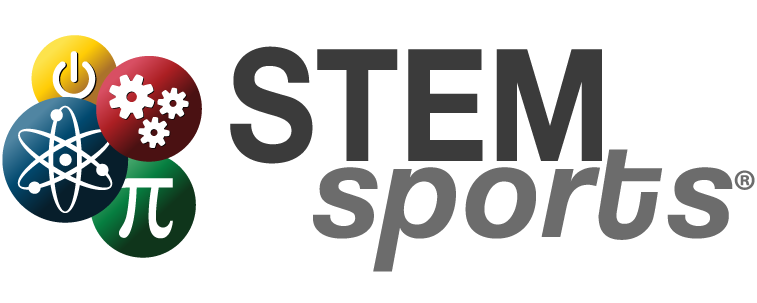As the STEM workforce continues to gain jobs at a rapid rate, the need for qualified, passionate STEM professionals continues to grow. STEM education is the key component to ensure students continue STEM throughout college and are prepared to join the workforce.
EdSurge wrote an article on how educators can create gateways and not be gatekeepers in students’ STEM education. In this case, they analyze calculus and how the approach around this difficult course has changed in recent years.
Colleges Can Make Calculus a Gateway — Not a Gatekeeper — to STEM Fields
This article was originally published by EdSurge
With science and technology jobs expected to grow twice as fast as other occupations over the next decade amid rapidly shifting demographics, creating a robust and diverse pipeline into STEM fields is essential to ensuring U.S. competitiveness and working toward racial equity. But neither will happen unless we address the fundamental gatekeeper to all STEM fields: undergraduate calculus.
Our technologically advanced society promises experiences that are user-friendly and intuitive. But the pathway to careers in science and technology is anything but user-friendly, as revealed by the sheer number of college students opting to switch out of a STEM major after facing a college calculus class. Black, Latinx, and women students are especially at risk.
This pattern points to the need for deep changes in the delivery of calculus, as highlighted in a report I recently co-authored with two colleagues, “Charting a New Course: Investigating Barriers on the Calculus Pathway to STEM.”
The idea isn’t to make calculus easier. Many students leave the STEM pathway despite passing the course. But the bland emphasis on procedural fluency and rote memorization that worked 50 years ago when calculus takers were a small group of elite learners clearly is not meeting the needs of the more diverse generation that will be responsible for the technology innovations of the future.
As highlighted in our report—published by Just Equations and the California Education Learning Lab—forward-thinking math departments across the country are implementing promising instructional approaches to make calculus classes more engaging and effective for students from various backgrounds. Student-centered approaches such as active learning, in which faculty facilitate opportunities for small-group collaboration and minimize lecture time, have been linked to improved student performance. Another version of this approach supplements large lectures with smaller interactive sections.
Positive student-faculty rapport also plays a central role in students’ success in mathematics. In fact, two of the three main factors in good calculus teaching, according to a study from the Mathematical Association of America, center on those relationships, not actual math content. The first is “classroom interactions that acknowledge students” by listening carefully to their questions and making sure they understand concepts. The second is “encouraging and available instructors” who demonstrate an interest in students’ learning and a belief in their abilities.
Such approaches directly respond to research showing the importance of fostering a sense of belonging and math identity among students historically excluded from STEM fields, something traditional approaches often fail to do. Likewise, peer learning networks, such as the Emerging Scholars Workshops, arose from research at the University of California at Berkeley that documented sharp increases among Black students who were supported in studying with their peers.
Efforts to make calculus content more relevant to STEM fields also support positive engagement for more students. For example, the life science faculty at the University of California at Los Angeles developed a course sequence that emphasizes applying calculus topics in a biological context. The sequence has been linked to “significantly higher” grades in subsequent science courses, controlling for demographic characteristics, prior preparation and math grades. Similarly, engineering faculty at Wright State University designed a “math for engineering” course, allowing students to take calculus later in their programs. This effort has improved persistence for female, Latinx, and Black students, they report.
Alternative approaches to remedial mathematics are also key. For example, corequisite strategies allow students to take a college-level course and receive support, rather than take a remedial math course. Numerous studies have documented the effectiveness of these approaches.
Such changes must start from the inside out, with mindset changes on the part of math departments. Traditional meritocratic narratives and implicit biases about students’ abilities can stand in the way of change. Professional development opportunities can help faculty understand how classroom structures can affect students’ sense of belonging, a crucial piece of the puzzle. Student evaluations can also be a tool to better understand the needs of students.
Calculus has been the de facto gatekeeper to STEM for decades, but it doesn’t have to be. Students’ success in calculus is not predetermined. It is something math programs nurture by creating the conditions for deeper learning. Proactive math and STEM departments are increasingly realizing new practices and mindsets can make calculus responsive to the needs of the 21st century—and, therefore, a gateway to STEM.
Why it Matters
One key takeaway from this article is that there has to be a mindset change among math departments. This is a lesson that can be learned among all STEM departments, regardless of grade level. As the landscape of the world changes, so should the education system.
At STEM Sports®, we focus on incorporating 21st-century skills and learning techniques into our curricula. For example, we utilize hands-on/disguised learning. This has been proven to increase student engagement and comprehension. We continue to adapt and improve our curricula as we find new, effective ways to engage students in STEM, by using the real-life application of sports.
Students and their needs should be at the forefront of every curriculum and course. Change across the education space is happening, and needs to continue to happen in order to give students a positive experience in STEM.
